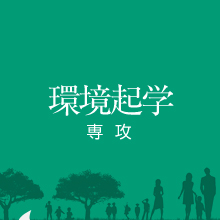環境地理セミナー 11/6
2019-11-05Dear all,
Good evening.
This is an announcement of the upcoming Environmental Geography Seminar.
There will be 3 presenters.
Please see all the details carefully below.
【Date】6 November. Wed. (Time: 15:00~)
【Place】 D201
【Content】
Presenters
(1). Cui Song (Paper review)
Title: The state of six dangerous glacial lakes in the Nepalese Himalaya Title: The state of six dangerous glacial lakes in the Nepalese Himalaya
Author: Nitesh Khadka, Guoqing Zhang, Wenfeng Chen
Journal: Terrestrial Atmospheric and Oceanic Sciences Vol. 30, No. 1, 63-72, February 2019
Abstract: Glaciers in the Himalaya are increasingly retreating and thinning due to climate change. This process is the primary cause of glacial lakes expansion and has increased the possibilities of the glacial lake outburst floods (GLOFs) that have been responsible for heavy loss of life and damage to downstream infrastructures. This study examines the status of the existing potentially dangerous glacial lakes in the Nepalese Himalaya such as Imja Tsho, Tsho Rolpa, Thulagi, Chamlang South, Barun Tsho, and Lumding Tsho; which were more susceptible to GLOF after the devastating earthquake in 2015. We examined the evolution and decadal expansion rate of lakes from 1987 to 2016 using Landsat images. The results show significant expansion of Imja Tsho, Barun Tsho, and Lumding Tsho at the rates of 42.1, 46.8, and 32.9% respectively, during 2006 – 2016; while other glacial lakes (i.e., Chamlang South, Barun Tsho, and Lumding Tsho) are relatively stable. Although the current status of glacial lakes may be stable in term of burst risk, high expanding lakes must be prioritized for detail studies. Continuous model-based monitoring and risk assessment, mitigation measures and disaster management strategies are necessary for reducing the impact of GLOFs.
Link: https://www.researchgate.net/profile/Nitesh_Khadka/publication/331934661_The_state_of_six_dangerous_glacial_lakes_in_the_Nepalese_Himalaya/links/5c94a55fa6fdccd460318892/The-state-of-six-dangerous-glacial-lakes-in-the-Nepalese-Himalaya.pdf
(2) Joshua Sasahombi (Paper review)
Title: Flood Risk Analysis in Lower Part of Markham River Based on Multi-Criteria Decision Approach (MCDA).
Authors: Sailesh Samanta, Cathy Koloa Dilip Kumar Pal and Babita Palsamanta
Journal: Journal of Hydrology, Hydrology 2016, 3, 29 doi:10.3390/hydrology3030029.
Abstract: Flood is one of the most commonly occurring disasters in Papua New Guinea. Every year the country receives up to 6000mm of rainfall. Therefore, many areas of the country are prone to flooding. There are several huge rivers and when they flood, they posed huge risk to people and properties situated within the rivers’ flood susceptibility areas. Markham river, is one of these huge rivers, in fact, it is the fourth largest in the country. Flood disaster management is still an ongoing challenge for the government, every time floods strikes communities. It takes weeks, months even longer for the government assistances to reached the affected people. This is why, the multi-criteria-decision approach (MCDA) is useful in helping the government and other responsible organizations to mitigate and manage flooding in the country. MCDA is a system that integrates or takes into account, the geospatial factors that contribute towards flooding and generates accurate rick maps to manage flooding.This paper was tailored to assess the use of multi-criteria decision approach (MCDA) in inland flood risk analysis. Categorization of possible flood risk zones was accomplished using geospatial data sets, like elevation, slope, distance to river, and land use/land cover, which were derived from digital elevation model (DEM) and satellite image, respectively. Lower part of Markham river in Morobe Province, PNG was selected for the study. Its covers an area of 758.30 km2 and located within the coordinates 146˝311 to 146˝581east and 6˝331 to 6˝461 south. The study proved that, the use of MCDA and GIS are very useful in the accurate and reliable flood risk analysis and mapping. It is also very convenient in the assessment of floods in any region, specifically in no-data regions, and can be useful for researchers and planners in flood mitigation strategies.
(3) John Mawenda (Paper review)
Title: Land change dynamics: insights from Intensity Analysis applied to an African emerging city
Author: Felicia O. Akinyemi, Robert Gilmore Pontius Jr & Ademola K. Braimoh
Journal: Journal of Spatial Science, 2016
Abstract: Land change in Kigali, Rwanda, is examined using Intensity Analysis, which measures the temporal stationarity of changes among categories. Maps for 1981, 2002 and 2014 were produced that show the land categories Built, Vegetated and Other, which is composed mainly of croplands and bare surfaces. Land change accelerated
from the first time interval (1981–2002) to the second time interval (2002–2014), as increased human and economic activities drove land transformation. During the first interval, Vegetated showed net loss whereas Built showed net gain, in spite of a small transition directly from Vegetated to Built. During the second interval, Vegetated showed net gain whereas Built showed nearly equal amounts of gross loss and gross gain. The gain of Built targeted Other during both time intervals. A substantial portion of overall change during both time intervals consisted of simultaneous transitions from Vegetated to Other in some locations and from Other to Vegetated in other locations.
2. Note this:
Please send me detailed information about your presentation at least 5 days before your turn.
For a paper review: title and author of the paper, journal name, which volume, pages, also the link (if possible) should be provided.
If a paper written in Japanese is going to be presented, please kindly send me the information both in Japanese and English.
【Notice】
※ In case you are absent from the seminar or late for the seminar, please contact Professors or me in advance. Any absence without permission is not allowed;
※ Please be punctual (very important);
※ Please do your full preparation for the seminar;
※ Your active participation is always appreciated;
※ Please feel free to contact me if you have any questions or comments.
Best Wishes & Regards.
Sun













